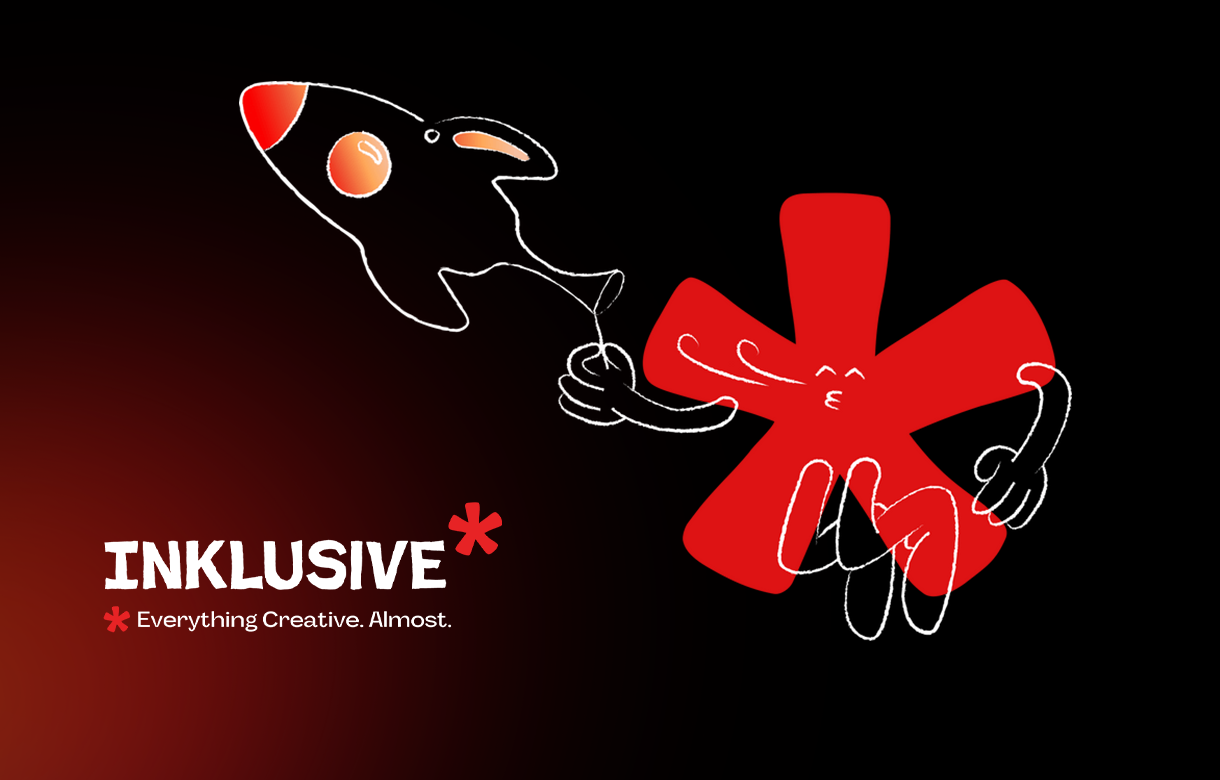ALERT!!!!
Dear Designers, If you are working on a project or for a client who does not provide a formal brief, one of the following situations is inevitable.
- Producing a non-portfolio-worthy work
- Feeling of over delivery and underpayment for a project where ended up investing 3X more time and still the client is not satisfied
- Your payment being stuck by the client
- You are being blamed by the client for your rude behavior and projects suddenly stop with no communication from the client
- Whenever you work for the same client again, more than work, working with that client gives you more headaches and stress

Dear Clients, if your organization or you have never believed in a structured written design brief, one or many of the following cases will be your reality.
- You will get an unsatisfactory result from the designer you are working with
- You will develop a tendency to never working with that designer/team again
- You will have the feeling of being cheated by the design team by overcharging you and not delivered as the work they demonstrated in their portfolio
- The required levels of commitment from the designer/agency were lacking which was required to complete the project successfully
- You end up changing your designers very frequently and the chances of scrapping the project entirely will be more
The above situations are not for a specific company, country, industry, or experience, it transcends borders, roles, and almost every aspect of the creative process and industry at large.
The key problem is with wrong or NO design briefs.
As the Founder & Head of Creative Strategy at INK PPT, I’ve seen the transformative power of well-crafted design briefs. These documents are not just administrative formalities; they are the bedrock upon which successful marketing campaigns and projects are built. This article is a comprehensive guide for those who take design briefs SERIOUSLY.
In this article, I have tried capturing several aspects of a design brief that holistically covers this topic for someone who is working with them for the first time or is tired of poor output with the creative teams.
Emoji bullets to represent below.
✅ What is the Role of a design brief
✅ A detailed design brief checklist covering Inclusions and components of an effective design brief
✅ Important tips on crafting a design brief
✅ I will walk you through some great design brief examples sourced from public libraries
✅ Intangible Benefits of a design brief
✅ It is worthwhile to glance through how a design brief for graphic design differs from the design briefs for video production projects. We will explore design briefs for presentations, UI & UX projects, video projects, posters, print ads, logo designs, reports, and many more
✅ I will also spend some time explaining how design briefs change with the industry, like creating unique design briefs for the tech or fashion industry.
✅ We will explore Behance to study design projects where the outcome was starkly different from the ones where the design brief was lacking
✅ To help you get on with this faster, I will also share some quick Design Brief Generator techniques & tools to help you get started
✅ Towards the end, I will give you some links to pre-made design brief templates online or Google Docs which can get you started
✅ Finally, some more interesting articles that I stumbled upon during my research over the years and also for making this article more polished
Without the right brief, the creative power, money(a lot of money), and most importantly the invaluable resource, that TIME gets wasted. More than that, the people working on lousy briefs tend to disorient faster than you think resulting in a poor execution overall.
A design brief outlines the specifics of a design project.
It acts as a roadmap, guiding both the creative team and stakeholders through the project’s journey. Think of it as a blueprint; without it, efforts can become disjointed and objectives unclear.
The below two images from Pinterest are classic examples of initiating the work without design briefs being well laid out or even narrated in a way that can be understood by the people on the ground responsible for execution.

Understanding the Role of a Design Brief
More than just a document, a design brief serves numerous purposes that are otherwise impossible to articulate, achieve, and align towards.
A well-structured design brief is your north star. It keeps everyone aligned with the business’s broader goals.

In my career, I stumble upon various open-ended projects with no design brief as such, when asked for, the stated response is “You Know how we work Aayush” and when we get to work, I often hear this statement multiple times “Aayush, forget whatever we have been doing, this time, we want to do something different and out of the box”. Slowly, I realized that many unprofessional customers prefer working with me or our team because we facilitate taking on projects without brief and it makes their lives easy.
I witnessed many projects derail due to a lack of clear objectives in the design brief. It taught me that the brief is not just a document; it’s a communication tool that ensures everyone’s vision is aligned from the start.
Key Components of an Effective Design Brief
When we are talking so much about a design brief, we need to understand the design brief format as well. It can be a document, a recorded loom, a well-written email, or a structured explanation in a live meeting or a call. In my opinion, recording a design brief meeting reaps long-lasting results, that’s why I prefer recording looms vs written briefs or live call explanations.
Project Overview and Objectives
Begin by stating what the project is and what it aims to achieve. This section should answer the ‘why’ behind the project. In my experience, a well-articulated objective can be the difference between a good and a great brief.
Target Audience and Market Research
Understanding who you are designing for is crucial. Detail the target audience demographics, psychographics, and any relevant market research data. Remember, a design that resonates with your audience is a design that succeeds.
Brand Identity and Guidelines
Your design must reflect the brand’s identity consistently. If your brand is youthful and vibrant, a conservative and muted design approach might not be the best fit. Aligning with the brand’s established identity ensures cohesion across all platforms.
Budget and Resource Allocation
Be upfront about the budget and resources. This transparency helps in setting realistic expectations. I recall working on a project with a tight budget, which was not communicated effectively, leading to scope creep and strained client relationships.
Timeline and Milestones
Include a detailed timeline with key milestones. This helps in tracking progress and ensures that everyone is on the same page. Missing a deadline can be costly, both financially and in terms of team morale.
Specific Deliverables and Scope of Work
Detail what the final deliverables will be and outline the scope of work. This clarity is essential to prevent misunderstandings and scope creep, which can derail projects.
Design Brief Checklist

Advanced Tips for Crafting a Comprehensive Design Brief

Incorporating Creative Inspiration and References
A creative brief should not stifle creativity. Include references, mood boards, or any inspirational material that can spark creativity. However, ensure these references serve as guidance, not rigid templates.
Balancing Creativity and Practicality
It’s essential to balance creative ideas with practicality. During my tenure at a leading agency, we learned to temper our creative zeal with a dose of reality, ensuring our ideas were not just brilliant but also achievable.
Stakeholder Involvement and Feedback Loops
Engage stakeholders early and often. Setting up regular check-ins and feedback loops can save time and resources. A project I led benefited immensely from early stakeholder involvement, which brought diverse perspectives and enriched the final outcome. Late entrants to design projects always spoil the mood of a project and disengage the one who is working with their whole heart to craft something good.
Legal and Compliance Considerations
Always consider legal and compliance issues. Overlooking these can lead to costly legal challenges.
“I recall one such example where I had used an image for a Samsung Mobile launch, a specific image which was used exactly the same by the competitor Oppo on the front page of their newspaper campaign. It created a significant issue as Oppo took the exclusive rights for that specific image while we had an older procured license which became invalid as per the terms.”
Use Design Brief Templates
Leverage templates provided by online generators to save time. I have also given some very useful tried and tested links below. You can customize these templates to suit your specific needs.
Collaborate Efficiently
Use online collaboration tools like Google Docs to work simultaneously with team members, saving time on back-and-forth communication.
Keep It Simple
Avoid overloading the brief with unnecessary details. Stick to the essentials that will guide the designers effectively. Write the brief in a way it is easier for the designer to understand who has to work on it, instead of just writing it without purpose.
Using these generators and techniques, you can create a comprehensive and effective design brief in a fraction of the time it would typically take.
Design brief changes with the end deliverable, let us checkout
Use Design Brief Templates
Leverage templates provided by online generators to save time. I have also given some very useful tried and tested links below. You can customize these templates to suit your specific needs.
- Graphic Design Creative Brief Template:
Google Docs: Graphic-Design-Creative-Brief-Template_Google-Doc

- Design Brief for Website-Design Template:
Google Docs: Design-Brief-for-Website-Design-Template_Google-Doc

- Design Brief for Logo Design Template:
Google Docs: Design-Brief-for-Logo-Design-Template_Google-Doc

Change in design briefs based on Industry:
Technology
In the tech world, design is about looking modern and innovative. You’ll focus on things like clean designs and technical illustrations. For inspiration, have a look at sites like TechCrunch or Wired.
Fashion
Fashion is all about trends and style. Your designs should show off colors and styles, and mood boards are really useful here. Fashion magazines online, like Vogue, can give you some great ideas.
Healthcare
Healthcare designs need to be clear and trustworthy. Think about medical diagrams and easy-to-read brochures. Medical journals are good places to look for examples.
Education
If you’re designing for education, make it fun and informative. Use infographics and educational posters. Educational publishers’ websites can be a good source for examples.
Food & Beverage
For food and beverage, your designs should look appetizing and inviting. Packaging design and menu layouts are key here. Food marketing blogs or food & beverage agency websites often have good examples.
Environment & Sustainability
In this sector, focus on eco-friendly designs. Use themes inspired by nature and consider sustainable materials. Environmental organizations’ websites can give you some good pointers.
Finance
In finance, designs should look professional and secure. Think about corporate report designs and financial data infographics. Financial services marketing websites are a good place to start looking for ideas.
Entertainment
Entertainment designs should be eye-catching and dynamic. Look for examples of movie posters or social media graphics for events on entertainment blogs or movie studio websites.
Automotive
For automotive, your designs should reflect speed and innovation. Car brochures and digital renderings are important. Automotive blogs or car manufacturer websites can provide great examples.
Non-Profit & Social Sector
Designs for non-profits should be heartfelt and impactful. Focus on campaign designs and fundraising materials. Non-profit organization websites often have examples that can inspire you.
How does a good design brief translate into a great project, a review on Behance?


Short on time, use these techniques and tools to generate amazing design brief
There are numerous tools and templates available that can streamline the process of creating a design brief. Explore these to find what best suits your project’s needs.
- Good Brief
This generator is versatile and user-friendly, offering a wide range of categories to choose from. It’s particularly useful for those seeking to create briefs quickly and is mobile-friendly, which enhances its accessibility over others. It’s one of the top-ranking ones on Google as well. - FakeClients
Ideal for generating a vast array of design briefs across various categories like logo design, UX/UI design, and web design. One unique feature of FakeClients is its large library of over 190 written briefs, allowing for a broader range of challenges. You can use any of the available templates or start your own. This one is my favorite, I also use it in hiring to give a sample assignment to recruit members at INK PPT - Briefbox
For those seeking detailed and curated design briefs written by real designers, Briefbox is an excellent resource. It offers briefs with specified difficulty levels, although access to more complex briefs may require a subscription. THIS IS SIMPLY A UNIQUE OFFERING & YOU MUST CHECKOUT. - ChatGPT
The AI design brief generator, If you brief(PROMPT) it right :), it will show awesome results and with the paid plan of CHATGPT, it can offer reference links from Behance, Dribble, and Pinterest to add more references to your design brief. You may also further enhance your design brief by adding an AI-generated image with DALLE. - Collect by Wetransfer
I have been using Collect to create an interesting mood board for any of my projects so that when I brief my design team or discuss with the customer a specific design direction I need to follow, it helps keep all the inspirations collected in one place. It’s a magical tool. Clients can use it to add and collect references in one place. - Loom
When you are out of time and have exactly 5 minutes to explain to someone what needs to be done, despite whatever we say, it happens that sometimes urgent requests come in and we have no scope for error.
Loom comes to your rescue there, streamline your ideas, plan your words, and hit record to start recording your screen with voice while you explain what needs to be done using any online site, document, or a pre-made brief. Loom helps you translate what you see to your designer so he starts seeing the design from your eye, saving errors and increasing acceptance of drafts.
Bonus: Amazing design brief template Example:

Download this Design brief template example: Design brief template Example.pptx
Common Mistakes to Avoid in Design Briefs
Vagueness and Lack of Specificity
A vague brief leads to ambiguous outcomes. Be as specific as possible. One of my early briefs lacked detail, resulting in a final product that missed the mark.
Overloading with Information
Conversely, an overly detailed brief can overwhelm you. Strive for balance – provide enough information to guide but not so much that it stifles creativity.
Ignoring the Target Audience
Never lose sight of who you’re designing for. A project that does not resonate with its intended audience is a missed opportunity.
Underestimating Timelines and Budgets
Be realistic about what can be achieved within the given time and budget. Overpromising and under-delivering can damage client relationships and team morale.
Further Reading, Books and Courses on Design Briefing
Continuous learning is key in our field. I recommend books, courses, and seminars focused on marketing strategy and creative direction to enhance your skills further.
This article not only serves as a guide but as a testament to the power of a well-conceived design brief in the hands of a skilled marketing professional.

Skillshare: The Bulletproof Design Brief | Dani Teal | Skillshare
Udemy: Practical Web Design process – Client’s brief to Web Design | Udemy
LinkedIn: Good Design Drives Business Online Class | LinkedIn Learning, formerly Lynda.com
Conclusion
A well-crafted design brief is an indispensable tool. It aligns teams, clarifies objectives, and sets the stage for successful project outcomes. As a marketing manager or growth marketer, mastering the art of the design brief is not just a skill but a necessity.











.jpg)
.jpg)


.jpg)



.jpg)






%20(1).jpg)





%20(1).png)